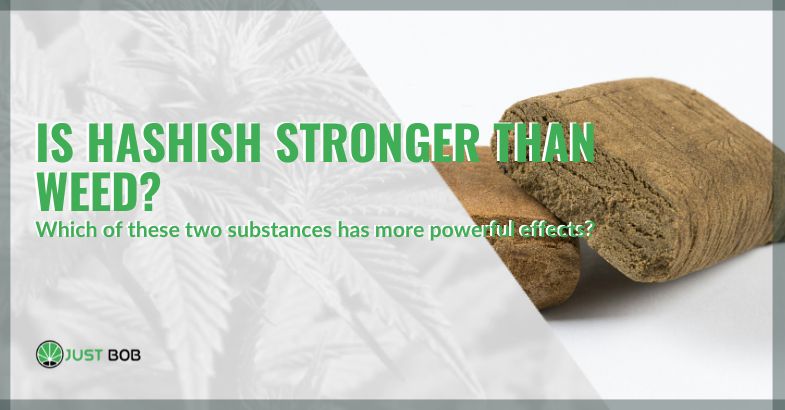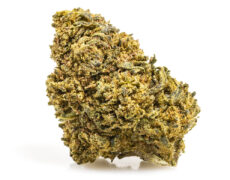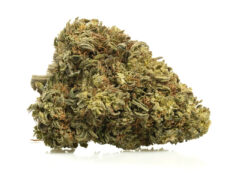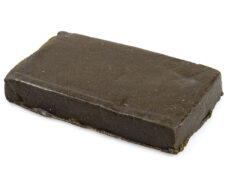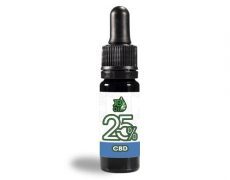Published on: 17/04/2024
Which of these two substances has more powerful effects
Surely you too have, at least once, wondered which of hashish and marijuana has stronger effects on the body.
The question is much debated and the dilemma cannot be settled in a few words, so in the course of this article we will try to analyse the issue in all its facets and try to give an answer.
It is always good to remember that taking these substances for recreational purposes is an illegal practice and prosecutable under criminal law; we here would simply like to satisfy your curiosity and try to give a comprehensive answer to the question without in any way encouraging you to use illegal substances.
It tends to be common opinion that hashish is stronger than marijuana, but is this really so?
We will try to dispel some of the clichés and shed some light on the subject.
In any case, we invite you to take a tour of our shop to buy legal hashish for collection or CBD weed.
Well, we can start.
Read also: What happens if you smoke CBD flowers?
What is hashish: a brief history of it
Hashish, which means ‘herb’ in Arabic, is a substance with narcotic effects derived from Cannabis sativa.
Hashish, more precisely, is obtained from the resin that covers the trichomes, those filaments found in the female flowers of cannabis.
This resin is then extracted from the buds and compressed by hand or by special machines to create pellets of the most varied consistencies and sizes.
And it is in the tricomes that we find the most potent active ingredients, those that cause the substance’s peculiar effects, such as euphoria, intoxication and relaxation.
The most important of these principles is Δ9-tetrahydrocannabinol, responsible for the most intense effects such as the sensation of time dilation, conjunctival hyperemia and stimulation of appetite.
But what is the history of hashish?
Hashish was historically widespread in the Muslim peoples before arriving in the West from the 19th century.
Fun fact: the word assassin supposedly means ‘person dedicated to hashish’; in fact, this is what the Crusaders would have called a 12th and 13th century Islamic sect known for its savagery and cruelty in battle.
This group, established in present-day Iran, in the Alamut stronghold of Qazwin, ruled Syria, Persia and Palestine, before being defeated in the 13th century by the Mongols.
The earliest evidence of the existence of hashish dates back as far as the Sumeri who used the substance in their religious and funeral rites; its use is also attested in ancient China.
Most of the written documents found date from the XI century, when the Muslim sovereigns began to regulate and ban its use.
From this it is assumed that its use was widespread in the Xth century in many Arab countries.
Sheikh Haidar was a great admirer of the substance and even encouraged his subjects to use it recreationally.
Later, in the 20th century, with the advent of prohibitionism, in Europe and the United States the substance was declared illegal and this ostracism, as we know, lasts to this day.
Today, production is mainly concentrated in Morocco, Pakistan, Lebanon, India and Nepal.
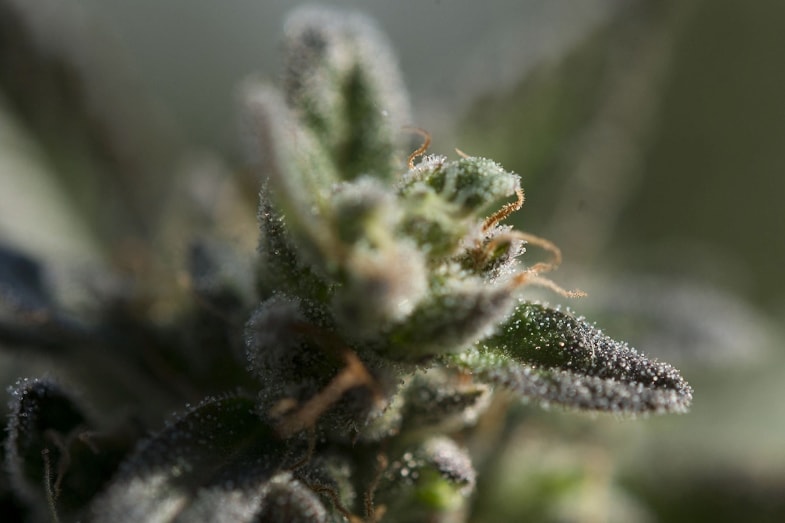

What are the different types of hashish?
- Hashish powder: it has a fine, powdery consistency and a green or brown colour. It is obtained by grinding the resin from cannabis plants;
- brick hash: this is the most common form and comes in the form of ‘blocks’ or bricks of compressed resin. Depending on how it is processed, it may take on a yellow colour as well as a brown or dark brown colour;
- charas: originates in India and Nepal and is obtained by rubbing hands on plant trichomes. It has a dark brown colour and its consistency is notoriously sticky;
- afghani: this is the type with the highest THC concentration, as the name suggests it is of Afghan origin. It has a dark colour and a softer consistency than the other types.
The side effects of hashish
There tends to be a higher THC concentration in hashish than in marijuana, so this factor will also be taken into account in the side effects.
The short term effects of hashish are:
- tachycardia;
- relaxation and drowsiness;
- lowering of blood pressure;
- euphoria;
- reddening of the eyes;
- dryness of the mouth;
- increased appetite;
- decreased pain;
- short-term memory lapses;
- dizziness and loss of motor coordination.
The long-term effects on the other hand are:
- frequent memory lapses;
- mood swings;
- insomnia;
- psychological habituation;
- withdrawal.
Not only negative effects, however, hashish can also be used medicinally because of its pain-relieving, anti-inflammatory, relaxing and relaxing properties and to stimulate appetite or alleviate sleep-related problems.
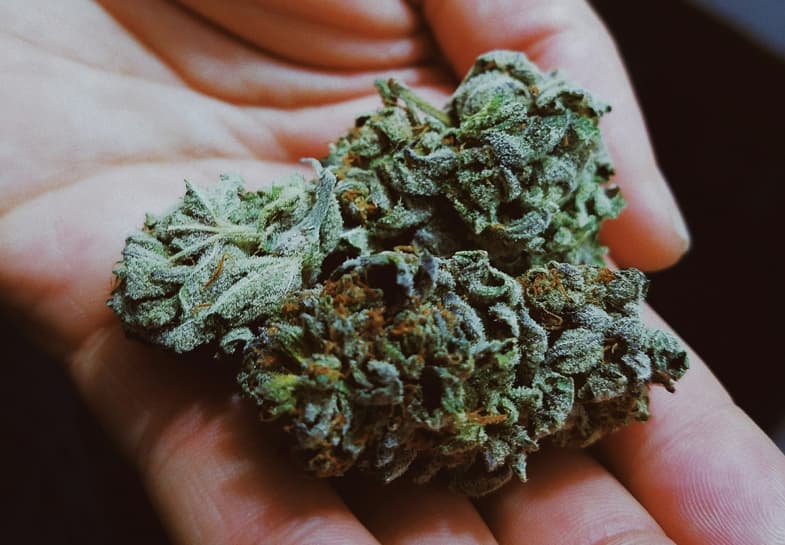

Marijuana: brief history and characteristics
Marijuana is a psychoactive substance obtained from the dried and pulverised female flowers of the Cannabis plant.
Its cultivation dates back some 10 thousand years as evidenced by fossils found in a cave in present-day Romania.
In fact, hemp was used in textiles to make clothes and ropes.
The first use of cannabis for therapeutic purposes dates back to 2737 B.C. when the Chinese emperor Shen Nung wrote a treatise on the beneficial effects of Ma (cannabis in ancient Chinese) in which he extolled its effects on menstrual pain, gout, rheumatism, malaria, constipation and asthenia.
In 2000 B.C. in ancient Egypt, as we learn from the medical epiphany of Ebers, it was apparently used to treat eye irritations and redness.
Ancient Egyptians used to macerate marijuana with honey to enhance its healing effects.
Throughout history, marijuana has always been considered a meditative substance with mystical properties. That is why it has been used in the Hindu world and by the Vedas (mentioned in the sacred text Atharva Veda to treat anxiety), by buddhists up to modern-day rastafarians.
Over the centuries, many artists have attributed to marijuana properties that can foster creativity and it has therefore often been used by musicians, writers and poets.
In France, the Parisian cursed poets appreciated its psychotropic, perception-altering effects, and later writers and musicians of the 60s and 70s, children of the US counterculture.
Finally, to arrive at the present day, the American and European prohibitionist campaigns of the 20th century have criminalised its use and penalised its consumption, although the debate is still ongoing, especially thanks to the openness of the WHO and the international medical community.
Side effects of cannabis
Cannabis precisely because of the presence of THC is a psychoactive substance with non-negligible effects such as:
- nausea;
- dizziness;
- anxious states and anxiety;
- lethargy and drowsiness;
- altered perception;
- decreased salivation resulting in dry mouth;
- reddened eyes;
- mood swings;
- decreased concentration and impaired memory.
But also beneficial anti-pain and anti-inflammatory effects; can stimulate appetite and reduce insomnia-related problems.
How is hashish produced?
Hashish is extracted from the resin of cannabis plants.
In countries where it is legal, the most common method of production is by hand and the process can be summarised in these five steps:
- plant harvest: harvesting takes place as soon as the trichomes, the resin glands containing cannabinoids such as THC, are ripe;
- resin harvest: as soon as the plants are ripe, the resin-rich parts, i.e. the flowers (or buds), are harvested. In a second step, the resin is separated from waste and other plant residues;
- manual processing: very meticulous and painstaking manual work separates the resin from the trichomes. This type of work consists of rubbing the buds between the hands or on surfaces suitable for the purpose. It is then that the resin is moulded to make it as compact as possible;
- pressing: the resin is pressed to remove the air, until it forms bricks or hash bricks (to make it easier to transport and use);
- drying: the hash is finally left to dry and dry for a long time, so that even the slightest traces of moisture vanish. In this way, the hash will keep longer and will not lose its properties.
Insiders strongly advise against the use of chemical solvents for extraction because they could be harmful to health as well as the environment. For this reason, manual production methods and the use of natural solvents are favoured.
How is marijuana produced?
In countries where the law allows it, the process of producing marijuana can be summarised in these five steps:
- variety selection: first the variety of cannabis to be grown is chosen, depending on its characteristics, from flowering time, height, size to the amount of cannabinoids and terpenes;
- seed germination: the selected seeds are allowed to germinate and growth can begin, more precisely the seeds are soaked in water for a set amount of time until they germinate;
- plant cultivation: the sprouts are planted in a suitable location taking into account light, temperature and humidity;
- flowering and ripening: branches, leaves and especially inflorescences (buds) rich in cannabinoids such as THC and CBD are developed. The plants are allowed to ripen until the trichomes (small resin glands) turn white or amber, a sign that the plants have reached maturity;
- harvesting and processing: once ripe, the inflorescences, the final product of marijuana, are harvested. These buds are left to dry to remove any moisture, so that the flavour, aroma and all properties take shape.
Obviously, this is not intended to be a vademecum for cultivation, we are providing this information for informational purposes only.
What are the main differences between hashish and weed?
There, we have seen the main characteristics of hashish and marijuana, but what are the differences between them?
Marijuana is the dried inflorescences of the cannabis sativa plant, whereas hashish (pollen and resins) is made by processing the ripe inflorescences of the cannabis plant and therefore its trichomes are much more potent, being in a pure state.
First of all, hashish generally has a higher concentration of THC than marijuana.
In marijuana, approximately 15-20% THC is found, whereas in hashish, THC concentrations of up to 20 to 60% can be found.
However, this does not necessarily imply that hashish has higher psychotropic effects than marijuana, no, the equation is not so obvious, as we will see later, and may depend on various factors.
Lately, however, as reported in research by the University of Mississippi, the THC levels of marijuana have been increasing, partly due to a deliberate choice on the part of producers given the demands of the market.
These higher THC levels increase possible psychoactive and psychotropic effects such as perceptual alteration, euphoria or relaxation, but also side effects such as mood swings, anxiety states and tachycardia.
Furthermore, the high THC concentration increases the risk of addiction to the substance.
Another difference that stands out is the colour, brownish, yellowish that of hashish, green the marijuana; the consistency then, hashish comes in sticky, soft blocks or bricks, whereas marijuana is loosely packed, spongy, not very dry, especially when of high quality.
CBD levels, on the other hand, can vary depending on how it is produced, so there are no certain quantities.
Cannabis usually has more fresh and floral, fruity and citrusy aromas, depending on the variety, whereas hashish has a more complex and spicy aroma.
Which substance is more potent between hashish and marijuana
But let’s come to the crux of the article at last.
Which substance between hashish and weed is more potent; which, in short, causes stronger and more intense effects?
Let’s get one thing straight: a lot depends on the processing and production methods used.
Moreover, it is often subjective: it depends on the person, his or her consumption habits, tolerance and psycho-physical state of mind at the time.
Yes, because most of the time, there is a strong psychological component of self-suggestion and conditioning, which cannot be measured by data and numbers in hand.
Hashish, however, has significantly higher concentrations of THC than weed, so the former tends to be more potent than cannabis.
Furthermore, terpenes and cannabinoids are more numerous in hashish than in marijuana.
This, more often than not, means that its psychoactive effects will be more intense and powerful.
Read also: Guide to the most popular strains in the world of weed
Conclusion
Here we come to the end of this article, hopefully having cleared up all your doubts on the subject:
is hashish or weed stronger?
Considering every aspect, every difference in production and processing of the product, and net of any taste or preference, which is entirely subjective, we believe we can state with a high degree of certainty hashish causes more intense effects than marijuana; therefore, yes, hashish is more potent than weed!.
We arrived at this conclusion taking into account the generally much higher THC levels in resins and pollens; but not only that, terpenes and cannabinoids are also higher in hashish.
Of course, this is not fixed and immutable, it depends on the production process.
We may well be faced with marijuana with higher THC levels than a lump of hashish, especially if it is of poor quality or stored badly, exposed to sunlight for a long time, for example.
So, we hope we have satisfied your thirst for knowledge, but we will never tire of repeating: we do not want to encourage in any way the use of illicit substances such as hashish or weed.
To answer certain dilemmas, you don’t necessarily have to test certain substances on your own skin, that’s what these articles are for, to avoid you being a guinea pig, so we hope you trust us and don’t feel the need to experiment yourself.
This article is purely for informational purposes, which is also why we have unreservedly reported on the negative side effects of such substances.
We always encourage you to respect the laws on drugs and hope to see you soon on Justbob!
Takeaways
- Hashish, derived from the resin of cannabis trichomes, tends to have higher THC concentrations compared to marijuana. This higher THC content contributes to more potent psychoactive effects, including euphoria and relaxation.
- Production methods and quality influence potency. Hashish is often produced with meticulous manual processes, leading to concentrated cannabinoids and terpenes, enhancing its psychoactive effects. Marijuana, however, can also have high THC levels, especially with modern cultivation practices.
- Subjectivity plays a role. The perception of potency varies among individuals based on tolerance, consumption habits, and psychological factors. While hashish generally has higher THC levels, personal experience can influence perceived intensity.
- Consideration of side effects and risks is essential. Both hashish and marijuana can cause short-term effects like euphoria and relaxation, but long-term use may lead to memory lapses, mood swings, and addiction. Awareness of these risks is crucial when evaluating potency.
- Legality and ethical considerations. Regardless of potency, the use of hashish and marijuana for recreational purposes remains illegal in many jurisdictions. Understanding legal implications and ethical considerations is important when discussing the potency and effects of these substances.
FAQ
Which substance has more powerful effects: hashish or marijuana?
Hashish tends to have more potent effects compared to marijuana due to its higher concentrations of THC and other cannabinoids.
What is hashish?
Hashish is a substance derived from Cannabis sativa, obtained from the resin covering the trichomes. Its history dates back centuries, being historically widespread in Muslim cultures before prohibition in the West.
What are the main differences between hashish and marijuana?
Hashish typically has higher THC concentrations and is made by processing ripe cannabis inflorescences. Marijuana is the dried inflorescences of the cannabis plant. Additionally, hashish tends to have a darker color and a stickier consistency compared to marijuana.

